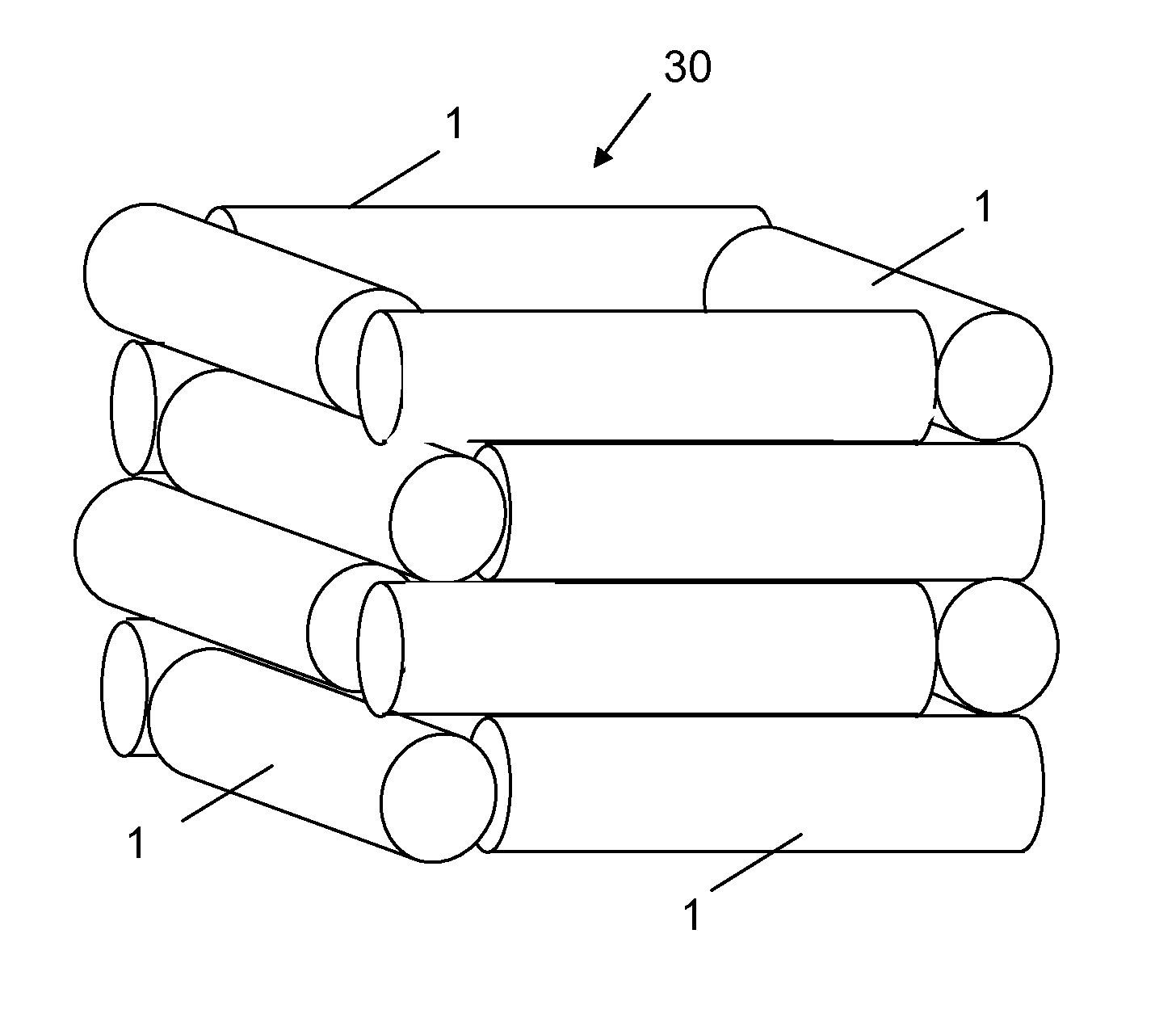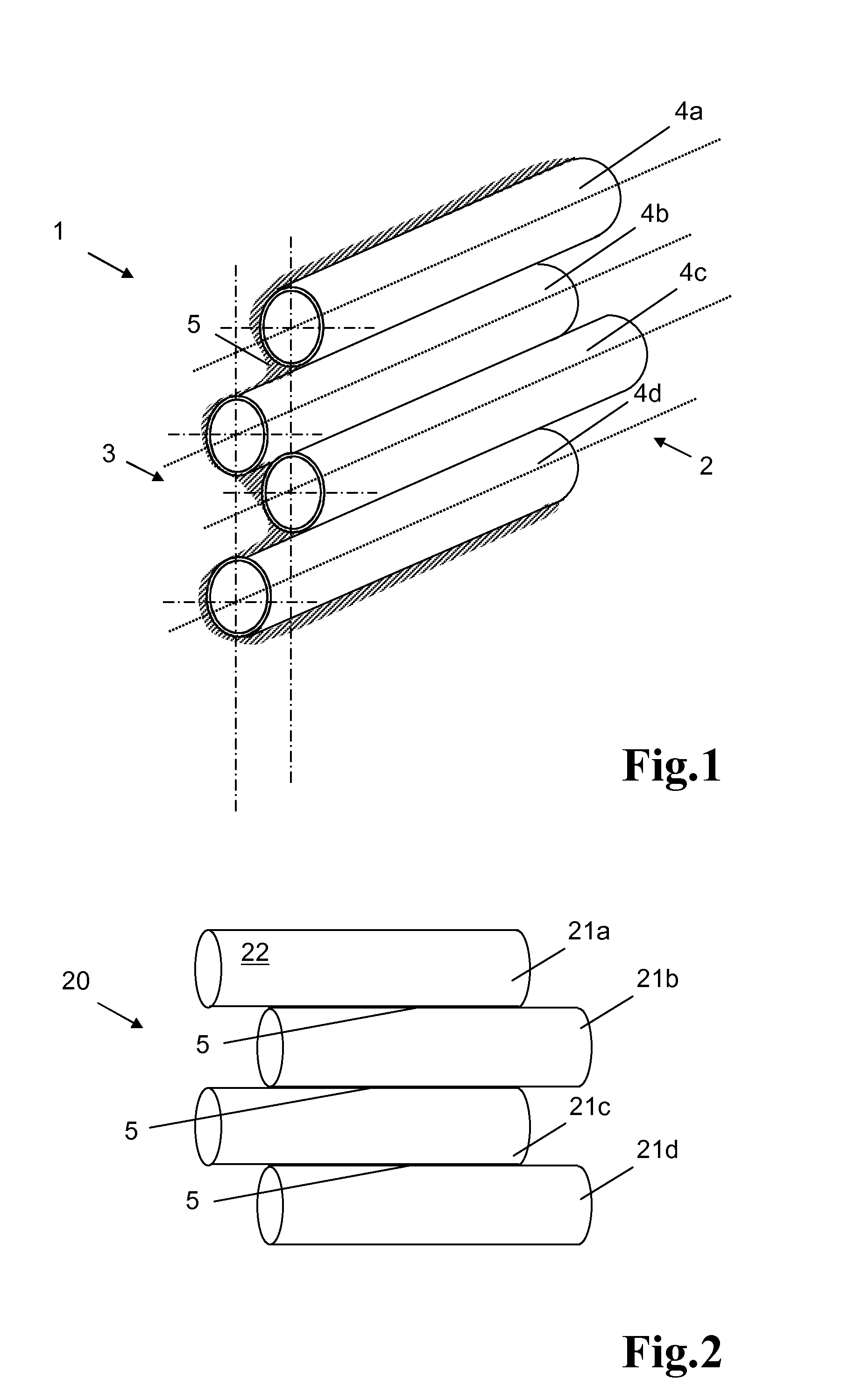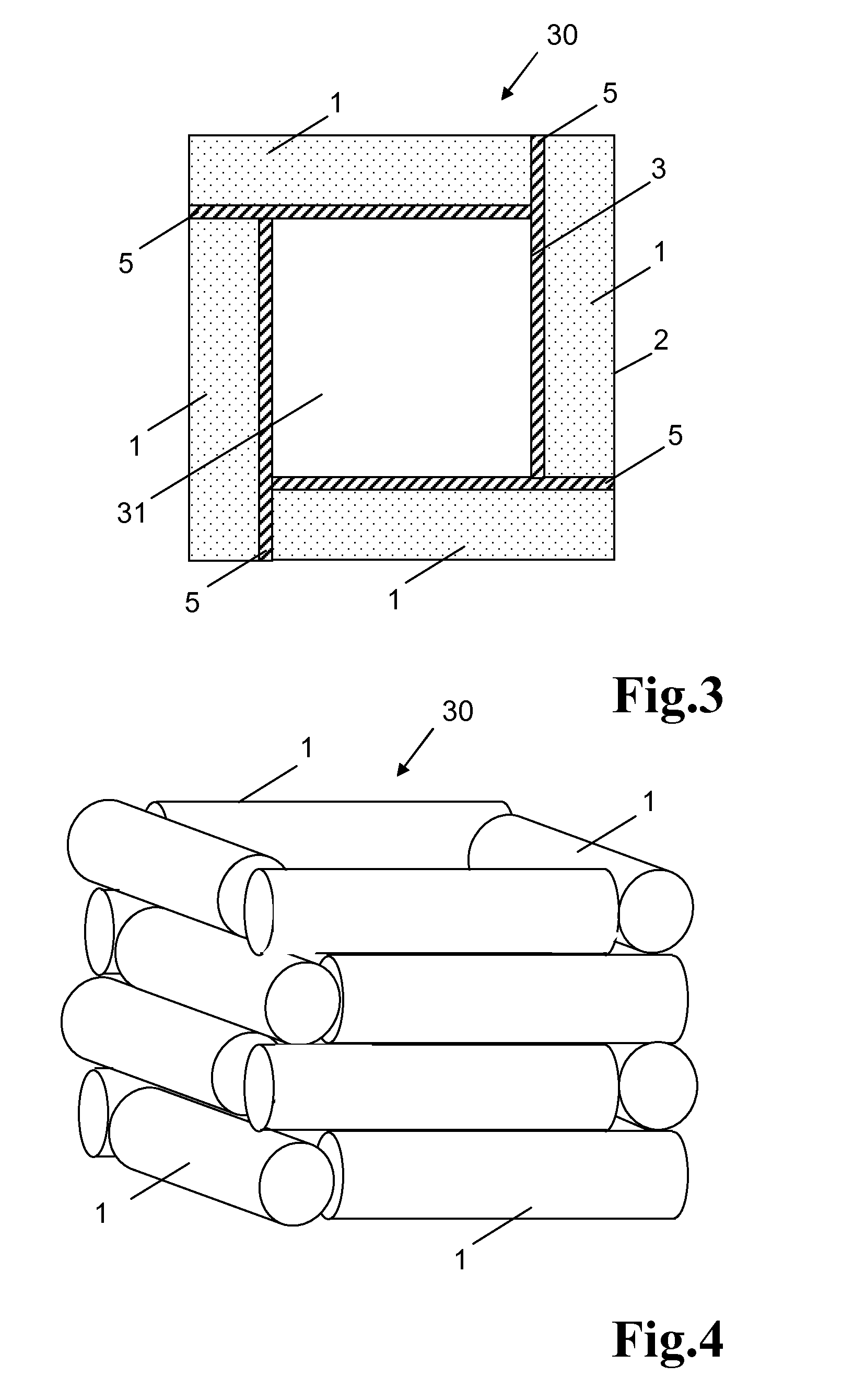Device for heat treatment
a heat treatment and device technology, applied in the field of devices for heat treatment, can solve the problems of limiting the cleanliness conditions inside the process space, affecting the service life of the furnace, and consuming a lot of energy, and achieves the effects of rapid heating and cooling of the material to be heated, variable shape, and easy manufacturing
- Summary
- Abstract
- Description
- Claims
- Application Information
AI Technical Summary
Benefits of technology
Problems solved by technology
Method used
Image
Examples
example 1
[0060]In the first embodiment, the device for heat treatment (not shown) comprises a furnace lining in the form of a cuboidal hollow body; the furnace lining comprises multiple wall elements 1 made of quartz glass, a floor plate, and a cover plate.
[0061]FIG. 3 shows a top view of four wall elements 1 that are stood up vertically and are connected to each other by means of a joined connection. The composite, in toto, has reference number 30 assigned to it. The wall elements 1 are assembled appropriately such that the ends of the wall elements 1, which are alternately offset by 50 mm with respect to each other, are nested inside each other and are connected to each other in a log house design. Each wall element 1 comprise a side 2 facing away from the process space 31 and a side 3 facing the process space 31. The side 3 facing the process space 31 is coated with the SiO2-containing connecting mass 5. A spatial view of the wall elements 1 connected in a log house design is shown in FIG...
example 2
[0074]The design of the device differs from the design of the device from exemplary embodiment 1 in that it eliminates two wall elements 1 situated opposite from each other. The openings are preparations for continuous introduction of the material to be heated. The furnace having the novel internal lining, in the form of the remaining two walls with cover and floor, is loaded in the middle in warm and switched-on condition (electrical power kept at 1.5 kW). The goods holder is situated at a distance of 60 mm from the heating field (floor).
[0075]The sample made of quartz glass, as described in exemplary embodiment 1, is heated up from room temperature, initially at a gradient of approx. 9 K / min, and reaches the temperature of 600° C. after only three minutes and a maximal temperature of 740° C. after 14 minutes. The difference to the maximal temperature of 800° C. as in example 1 is related to convective losses due to the two side openings and the somewhat larger distance between the...
example 3
[0076]The design of the furnace according to example 3 corresponds to that of the device from example 2. The furnace is operated in warm and switched-on condition (permanent electrical power of 1.5 kW) and used for a continuous sintering process. For this purpose, a component coated on the upper side with gold, for example a quartz glass tube having dimensions of L×W×H=1,000×34×14 mm, is guided appropriately through the furnace to burn-in the coating such that the component moves through the hot process chamber of the furnace at a speed of 200 mm / min and is guided out on the opposite side. The component is moved through the furnace using a holder situated outside the furnace. The tube is moved keeping a distance of 60 mm to the heating field of the floor plate.
[0077]Downstream of the furnace, the coating on the tube has a visually homogeneous surface with very good surface adhesion. The adhesion of the gold to the surface was determined using the adhesive tape tear-off test. Said te...
PUM
| Property | Measurement | Unit |
|---|---|---|
| outer diameter | aaaaa | aaaaa |
| temperatures | aaaaa | aaaaa |
| temperature | aaaaa | aaaaa |
Abstract
Description
Claims
Application Information
 Login to View More
Login to View More - R&D
- Intellectual Property
- Life Sciences
- Materials
- Tech Scout
- Unparalleled Data Quality
- Higher Quality Content
- 60% Fewer Hallucinations
Browse by: Latest US Patents, China's latest patents, Technical Efficacy Thesaurus, Application Domain, Technology Topic, Popular Technical Reports.
© 2025 PatSnap. All rights reserved.Legal|Privacy policy|Modern Slavery Act Transparency Statement|Sitemap|About US| Contact US: help@patsnap.com



